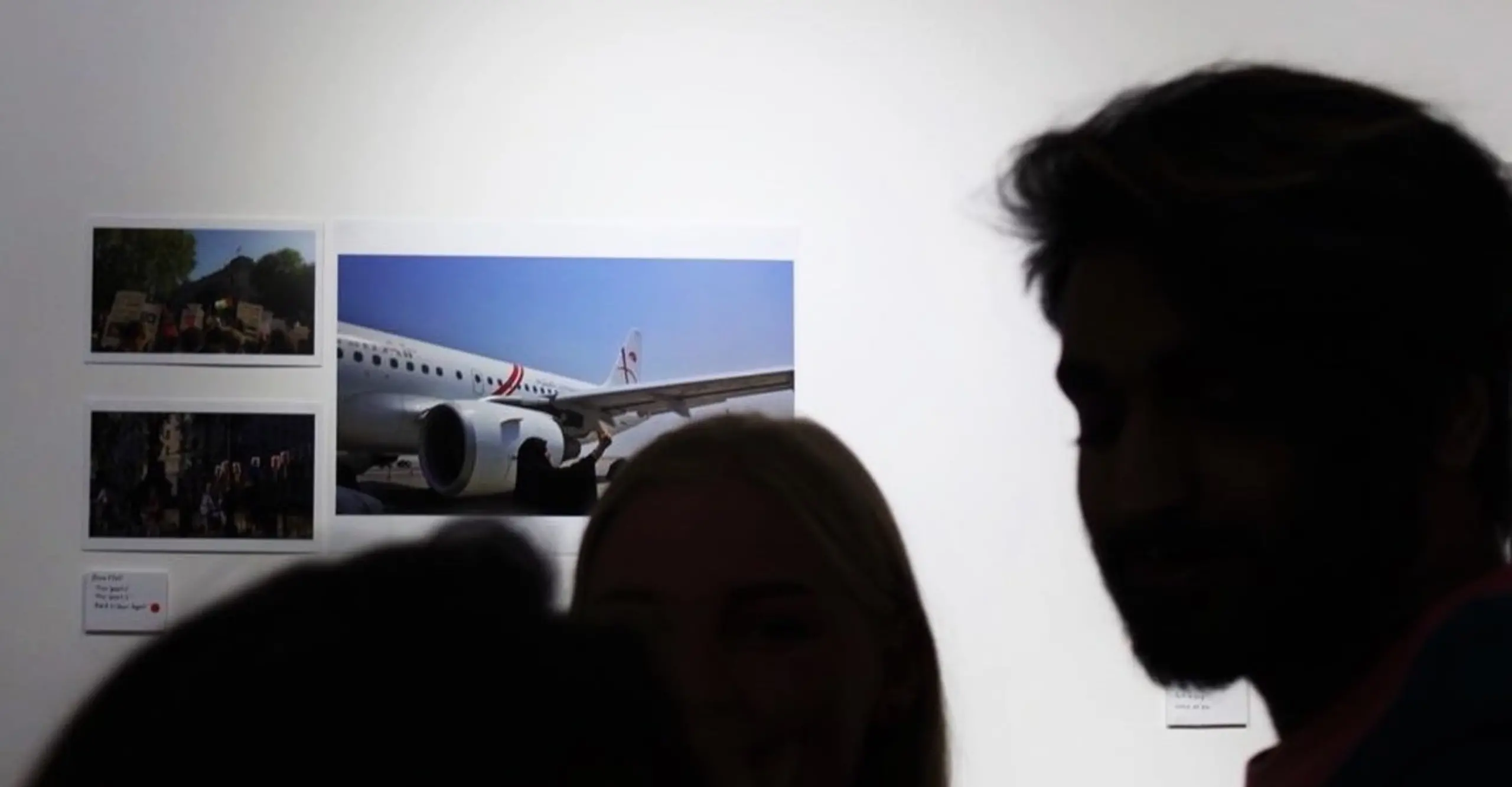My name is Beneen and over two years ago, when I was fifteen, I applied for the Brit school, submitting a photography portfolio despite having only taken up photography a month before. My application wasn’t successful but applying was what got me interested in photography, I'm so grateful I never gave up after I was rejected. Almost all of my photography is done on my phone or a really cheap point and shoot, so I guess I'm quite limited in what I can do and just work with what I have.
I discovered the Develop programme through the Arts Emergency mentoring scheme. Develop has been super helpful in providing a professional environment where I'm able to speak to like-minded people but also has helped me with the essential skills and guidance a photographer needs when starting out, some of which I used to help me in the exhibition itself like learning that my work is actually worth something and having a piece sold on the day.
What was your exhibition?
Our project, People Power on Paper, was a one-day pop-up art exhibition by young people in the summer. The central theme was ‘social progress’ but all the artists were advised to not let this restrict their creativity, and a range of art forms was showcased including visual, photographic and textile.
Why did you decide to put on an exhibition?
Last year a foundation visited my school and were willing to give £500 worth of funding to any project so my friend Bia and I decided we'd be super ambitious and set up an entire art exhibition having no clue what it entailed. At the time we were all thinking about what we'd do once we finish school and saw those pursuing the arts didn't have much to talk about in statements and CV's so we thought this would be a perfect opportunity to get them involved in something considered professional. Halfway through we felt too restricted by the foundation, they were asking for too much work in return for the funding which we didn't need very much of, so we learned it's fine to put your foot down when you're unhappy with something.
How did you go about planning it?
Planning the exhibition over an entire year meant we had to meet at least once a month to discuss the logistics, and a lot of that time was spent just sitting in cafes talking through the things we like and what we would want to see if we were going to an exhibition.
After securing the venue, we began to find artists to be in the exhibition, which was more difficult than anticipated. We contacted every artist we knew; people in school, friends of friends and even put up an advert in an Arts Emergency newsletter. In the end, we finally got a solid ten artists to showcase their work.
What was successful about the project?
It was brilliant showcasing at Cave because we felt part of the local community since as an artist-led creative community/retail space many locals know about it and would often visit.
The turnout was probably one of the best things about the actual event because our biggest worry all year was people not showing up or enjoying it, especially for the evening event which had the largest turnout of all the day and was the most fun for us all
What were the challenges you faced?
One of the challenges we faced was finding artists who could commit. Three of them backed out, and two were very last minute, deadlines were difficult to keep to but we made sure to accommodate each artist since they were all on their summer holidays and lived all over London.
What advice would you give to someone wanting to put on a show?
I'd really recommend anyone considering putting on an exhibition to have an evening event for friends and family, it makes it feel super rewarding to have everyone there.
The only other advice I have for someone looking to do the same is to have a detailed plan of how you want the whole thing to look but be open to change because that's inevitable, and often for the best. I think the one thing that surprised me most is just how much things change from the original idea; our project went through so many changes due to all kinds of unpredictable reasons but it all worked out for the best.
– Beneen
